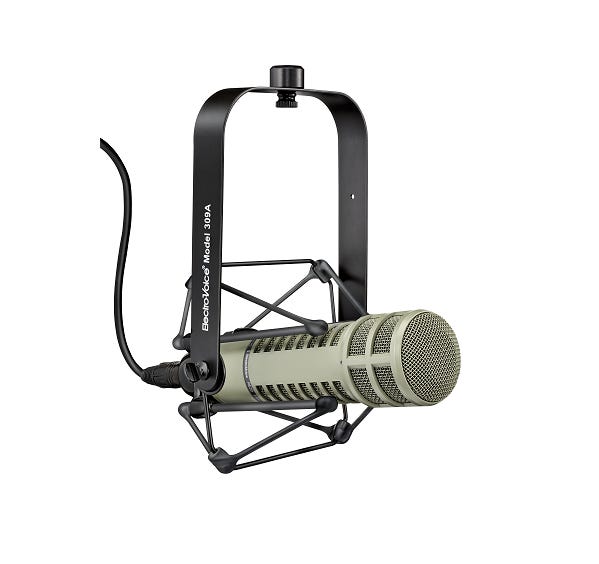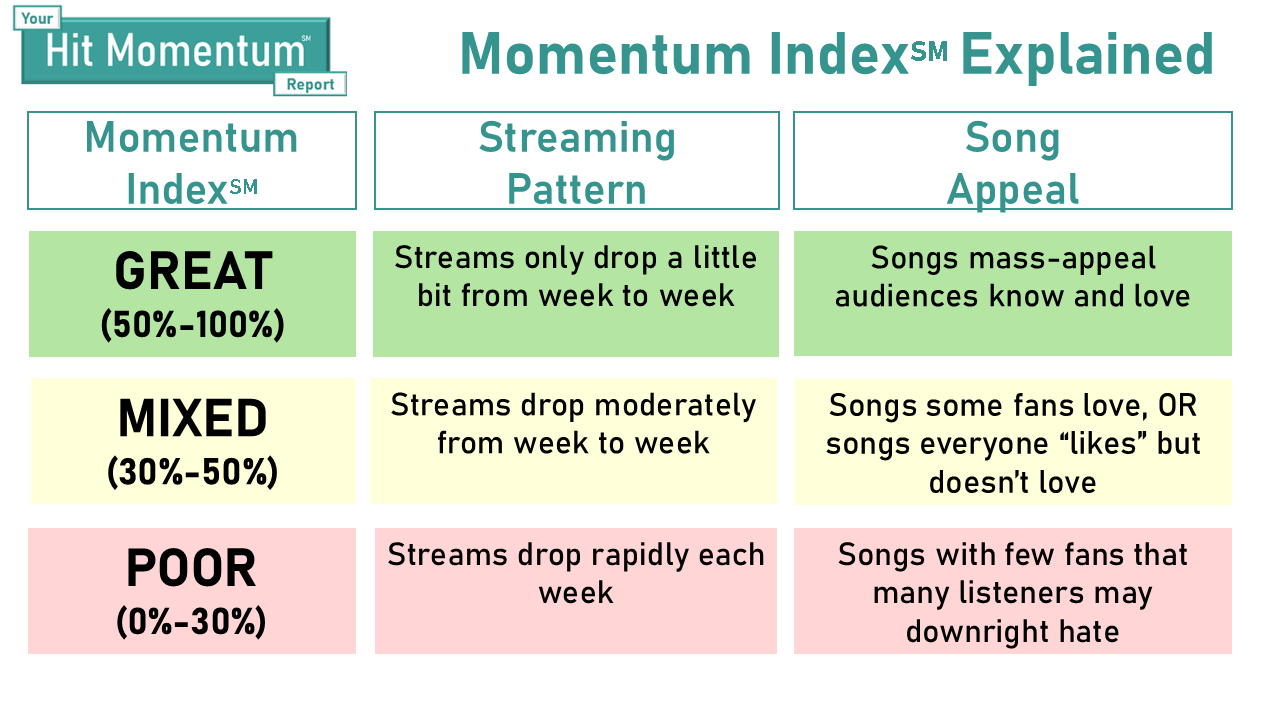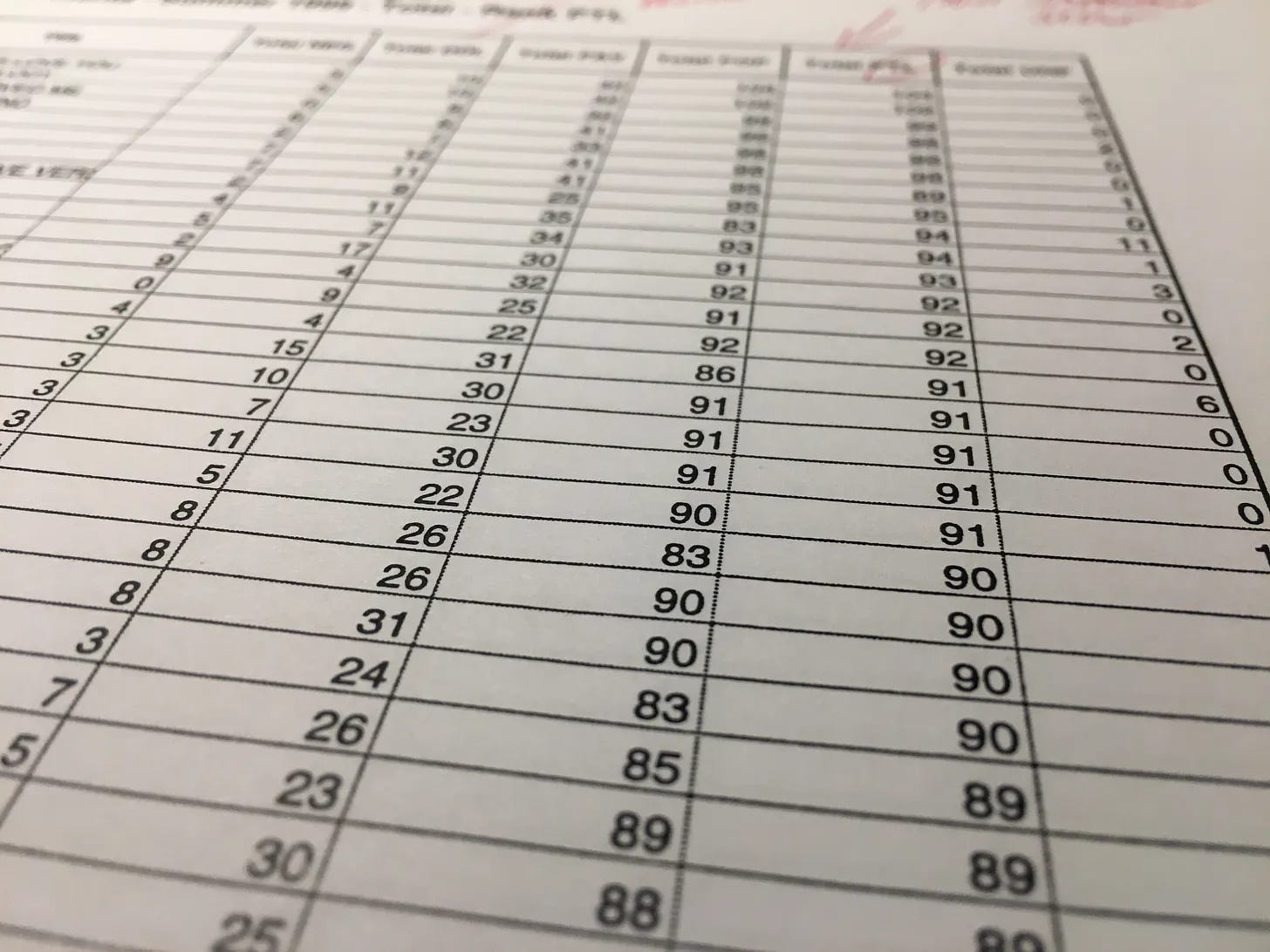An Announcement for my Radio Friends
After months of analyzing thousands of songs' streaming patterns, I'm debuting a new service to help you pick your market's biggest hits.
First, I apologize if you’re not a professional radio programmer, as today’s announcement will bore you immensely. We’ll resume regular programming for industry insiders and music buffs and chart geeks alike next Thursday.
Today, I’m launching Your Hit Momentum ReportSM, a new service for radio stations with contemporary music formats. It works a lot like old-fashioned local callout research: You give us a 35 song test list. We give you a report ranking those songs from best to worst.
What happens in-between is nothing like callout.
Instead of recruiting and interviewing paid research respondents, Your Hit Momentum Report analyzes which songs listeners in your local market are playing on all major music streaming platforms to decipher which songs are real, mass-appeal hits.
It’s also a heck of a lot cheaper than callout
Why streaming data hasn’t worked for radio… until now.
For 15 years, I led radio’s leading callout research provider. During that time, Spotify replaced iTunes as the way fans listen to the music they control. I knew streaming data could be the biggest breakthrough in new music research history. After all, it tells you exactly what every single streaming user plays when they pick the tunes.
Unfortunately, whatever was #1 on Spotify was rarely the song we knew real radio listeners knew and loved most.
Since streaming data measures how many times a song is played—not how many individual people actually play it—many plays on streaming actually come from a few rabid artist fans eager to try out their latest releases. It’s how Taylor Swift’s “Fortnight” set a weekly streaming record despite never becoming a big hit.
So if simple play counts can’t find the real hits, what does?
Momentum: The key to finding the real hits in streaming
After spending 18 months analyzing thousands of songs’ streaming patterns—and examining the patterns of proven mass-appeal hits—I discovered the missing link: The real hits aren’t the songs with the most streams this week; they’re the songs fans keep streaming week after week.
I call this metric the Momentum IndexSM and it’s at the heart of Your Hit Momentum Report.
While the Momentum Index algorithm is complex (I had to use A.I. to develop it), the concept is simple: If people try a song on streaming and they love it, they’ll keep playing it. If people try a song and hate it, they’ll abandon it quickly.
The Momentum Index is a simple score from 0 to 100 that identifies the “Yes,” “Maybe” and “Heck no” songs:
The math is complex. The report is simple.
Some programmers will carefully examine each song’s Momentum Index alongside whether a song is new, current or recurrent, and the song’s total streaming audience in their market, weighing each metric based on their station’s music strategy.
For everybody else, there’s the MVP Rank.
The MVP Rank analyzes three key components of a song’s streaming pattern (“Momentum”, “Vintage” and “Plays”) and gives you a simple ranker from #1 to #35 of songs from best to worst.
A whole lot cheaper than callout
I believe in callout. It’s the most direct method to learn which songs listeners recognize, love, and dislike.
f you can still afford high quality callout, you should use it.
Unfortunately, as the cost of recruiting, vetting, interviewing, and compensating research respondents has ballooned, many stations simply can’t afford it.
Your investment in Your Hit Momentum Report pays to access raw behavioral data from streaming music services and to analyze that data to make it useful for you as a radio programmer. Fortunately, paying to access existing data from 95% of all music streaming users in your market costs less than recruiting 50 to 100 marketing research respondents.
How much less?
Your Hit Momentum Report typically costs less than one-quarter what a comparable callout research program costs.
Who should use Your Hit Momentum Report?
Any station with a mass-appeal contemporary format, including Mainstream Top 40, Rhythmic CHR, Adult Top 40, Hot AC, or AC, will find Your Hit Momentum Report effective in picking current, recurrent, and new titles. We will also be serving Country stations with a version of the report specifically designed for Country consumption patterns.
Who should not use Your Hit Momentum Report?
If you’re a Gold-based station, Your Hit Momentum Report won’t help you. Additionally, if you’re audience has a very narrow definition of the songs they expect from your station—such as Indie or Gospel—your instincts about your listeners are your most valuable programming tool.
I’m down. Tell me more.
You can learn more at the website www.yourhitmomentumreport.com.
Check out the “Why Use It?” and the “F.A.Q.” pages for details.
For a personal demo, or simply to ask questions directly, contact me.
Wait? Don’t You already do this Hit Momentum thing?
Kind of.. My Hit Momentum Report for paid Graphs About Songs subscribers is a newsletter that analyzes the U.S. Spotify 200 chart. It also uses the Momentum Index algorithm to find the hits mass audiences know and love.
The difference is that it’s a tip-sheet style newsletter based only on publicly published nationwide Spotify data. Your Hit Momentum Report analyzes the songs you choose using local data in your market from all major streaming services.
Got any other articles about streaming data and radio?
Boy do I…
Yes, Radio Still Makes Hits. Yes, in 2025. Here’s the Spotify Data to Prove it gives examples of huge hits that didn’t peak on Spotify until Top 40 Radio made them famous.
Why Swift's Showgirl Isn't Guaranteed to be a Smash shows why a big debut on Spotify often never becomes a big hit.
Five Ways Streaming has Structurally Changed Pop Music examines five concrete ways recording artists are crafting songs with streaming listeners in mind.
Contrary to Popular Belief, Contemporary Music Still Rules spotlights how—despite claims that everyone is listening to old music—it’s still today’s music that we consume the most often.
Do You Have to Let it linger shows the role streaming plays in keeping songs on the charts forever.
Is Research Ruining Radio dives into the history of callout reseach, the role it plays in keeping songs on the radio for months, and if it needs a new approach to accurately represent today’s music fans.
Does The #1 Song Even Matter Anymore? explains the difference between Artist Stan and Casual Fan music consumption styles, how streaming data mixes both consumption patterns, and how it’s ruined the Hot 100 chart.
Is Top 40 Radio Out of Touch? compares streaming data to radio airplay—and shows why a direct comparison of what’s topping streaming charts this week does not correlate to the songs radio stations are playing most.
Why it’s so hard to know what’s really a hit today explores how streaming has fundamentally changed how we measure music consumption and the impact that change has had on how long songs remain hits.






